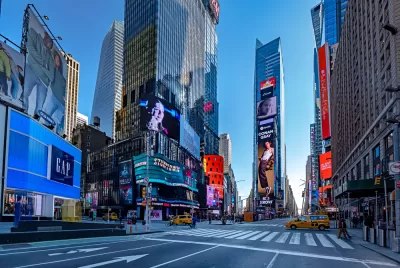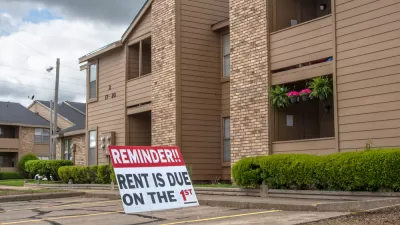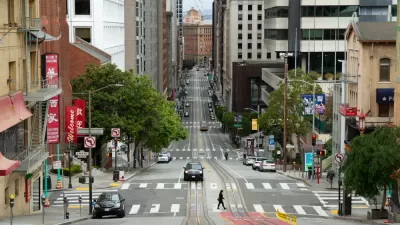The decrease in U.S. economic activity during the pandemic year of 2020 reduced the country's greenhouse gas emissions by 10.3 percent.

Rhodium Group has released its preliminary report on U.S. greenhouse gas emissions for 2020, estimating a dramatic decrease in emissions during the pandemic year.
Kate Larsen, Hannah Pitt, and Alfredo Rivera write an article for the Rhodium Group to explain the report's preliminary estimations, noting at the aperture that 2020 was an unusual year: limiting the spread of infection produced a historic shock to the U.S. economy and a 10.5 percent reduction in greenhouse gas emissions.
"That is the single largest drop in annual emissions in the post-World War II era, outpacing the Great Recession of 2009 when emissions dipped 6.3%," according to the article. The decline also lowers GHG emissions in the United States below 1990 levels for the first time. "With emissions down 21% below 2005 levels, this means the US is expected to far exceed its 2020 Copenhagen Accord target of a 17% reduction below 2005 levels."
The Paris Accords are intended to prevent economic collapse (by way of environmental collapse), so the writers caution against considering 2020 a down payment on the country's progress in meeting worldwide climate goals.
"With coronavirus vaccines now in distribution, we expect economic activity to pick up again in 2021, but without meaningful structural changes in the carbon intensity of the US economy, emissions will likely rise again as well."
The same report released in January 2020 found increased greenhouse gas emissions for the first time after three years of decline. In summer of 2020, Rhodium Group also released a report calculating the economic damage that achieved greenhouse gas emission reductions.
FULL STORY: Preliminary US Greenhouse Gas Emissions Estimates for 2020

Alabama: Trump Terminates Settlements for Black Communities Harmed By Raw Sewage
Trump deemed the landmark civil rights agreement “illegal DEI and environmental justice policy.”

Planetizen Federal Action Tracker
A weekly monitor of how Trump’s orders and actions are impacting planners and planning in America.

The 120 Year Old Tiny Home Villages That Sheltered San Francisco’s Earthquake Refugees
More than a century ago, San Francisco mobilized to house thousands of residents displaced by the 1906 earthquake. Could their strategy offer a model for the present?

In Both Crashes and Crime, Public Transportation is Far Safer than Driving
Contrary to popular assumptions, public transportation has far lower crash and crime rates than automobile travel. For safer communities, improve and encourage transit travel.

Report: Zoning Reforms Should Complement Nashville’s Ambitious Transit Plan
Without reform, restrictive zoning codes will limit the impact of the city’s planned transit expansion and could exclude some of the residents who depend on transit the most.

Judge Orders Release of Frozen IRA, IIJA Funding
The decision is a victory for environmental groups who charged that freezing funds for critical infrastructure and disaster response programs caused “real and irreparable harm” to communities.
Urban Design for Planners 1: Software Tools
This six-course series explores essential urban design concepts using open source software and equips planners with the tools they need to participate fully in the urban design process.
Planning for Universal Design
Learn the tools for implementing Universal Design in planning regulations.
Clanton & Associates, Inc.
Jessamine County Fiscal Court
Institute for Housing and Urban Development Studies (IHS)
City of Grandview
Harvard GSD Executive Education
Toledo-Lucas County Plan Commissions
Salt Lake City
NYU Wagner Graduate School of Public Service





























